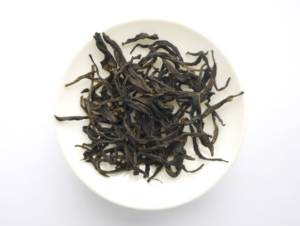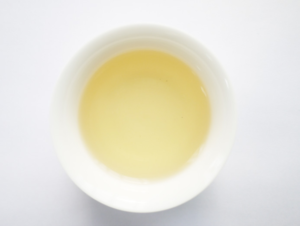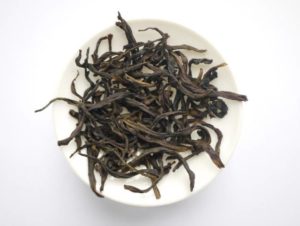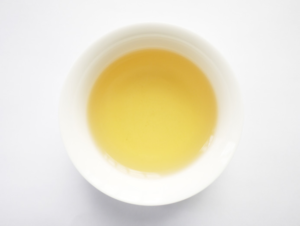The Southern Region is located in the south of China, including Fujian, Guangdong, Hainan, and Guangxi. This region is the warmest tea-producing region of China and thanks to the warm climate, rich soil and plenty of rainfall, the Southern region enjoys the perfect terroir for growing tea.
In the Southern Region, the average annual temperature is 19-20 Celsius, with the lowest average in January between 7-14 degrees. The growth span of Camellia sinensis lasts for 10 months in such a warm climate. This region also enjoys the most rainfall throughout China. The region produces all types of tea from white to black to dark but wulong is a showstopper. Three major wulong producing townships are Anxi, Fenghuang, and Wuyishan, ranging from light wulong to dark wulong respectively.
Best of the best are Tieguanyin, Fenghuang Dancong and Rock wulong. Liubao tea (a type of dark tea from Guangxi) is unique to the region with a total production of 2,100 tons. Dancong wulong of Guangdong is also a unique tea of the Southern region, among which Fenghuang Dancong from Chao’an and Lingtou Dancong from Raoping are the most well-known. In 2015, total wulong tea output of Guangdong province amounted to 38,000 tons.
The Southern region is also one of the leading tea export regions of China. Guangdong province leads the country in tea export with a volume of 5.08 million kilograms and total value of $40.74 million USD in 2015. In recent years, Yingde black tea from Guangdong province achieved solid market status through its unique positioning and benefited from the growth of domestic black tea market. Yinghong No.9 – which is both a cultivar and a brand of Yingde black tea – has become an influential tea brand.
This spring the eastern part of the Southern region had higher than usual rainfall. Heavy rain has affected much of southern China since May 4, triggering floods and landslides. Early morning on May 8, one such landslide occurred after a heavy weekend downpour in Fujian province. Nearly 8 inches of rain fell in the mountainous region in less than 24 hours. Torrents of mud and rocks buried and killed dozens of people, greatly disrupting the lives of Fujian residents. Excessive rain not only interferes with the timely plucking of teas, but also lowers the quality of wulong teas.
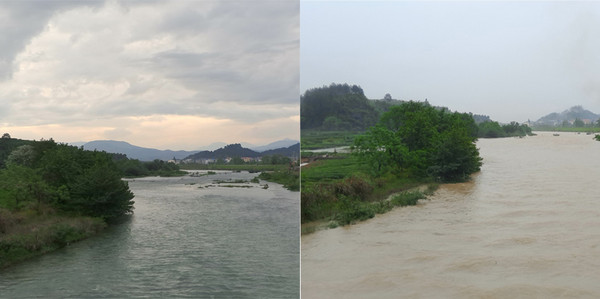
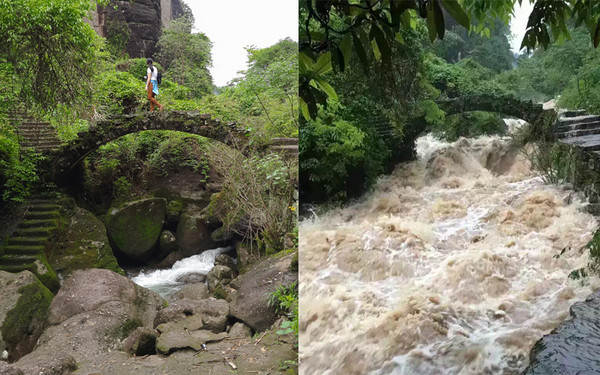

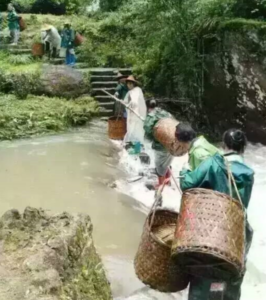
Tea harvest workers had to walk over stone bridge buried underneath water. Photo credit: Xiaowen Chen.

Tea review
Key tea type: Wulong
Key sub-region: Anxi, Fujian Province
Anxi is perhaps the most famous producing region for wulong tea, known for its Tieguanyin (Iron Goddess of Mercy), a mild semi-oxidized wulong with distinct flower fragrance. In 2015, Anxi produced over 20,000 tons of Tieguanyin, making it the most popular wulong in the market.
Key sub-region: Wuyishan, Fujian Province
Wuyishan in Northern Fujian is home to a stellar wulong – Rock tea, characterized with its unique rock flavor from its soil rich in volcanic rock sediments. There are hundreds sub-cultivars of rock tea in Wuyishan, the most famous and expensive of all is Dahongpao (Big Red Robe). Similar to Puer, vintage rock wulong gets better over time and is sought after by savvy tasters and collectors.
Key tea type: White
Key sub-region: Fuding, Fujian Province
Fuding is the earliest producing region of white tea and home to the world’s finest White Hair Silver Needle (Baihao Yinzhen) and White Peony (Bai Mudan), differentiated by plucking standards. Tucked into the province’s northeastern corner, Fuding is a bay area enclosed by the sea, and the region’s most reputable cultivars are Fuding Dabai and Fuding Dahao, which thrive in the ultra-humid coastal climate and rocky soil. It is worth mentioning that the best jasmine tea is also produced in Fuzhou, the capital of Fujian province, using quality green tea or white tea from the region as a base.
You can go vintage with white tea too. Starting around 2006, white tea makers started to press white teas into cakes and bricks, usually the Gongmei or Shoumei grade (mainly leaves, no buds) of white tea, to save inventory storage space. Recent researches have shown that vintage white teas of 3 years have better health benefits than fresh harvest. Vintage white teas also feature distinct thick dried-fruit note like prune which is drastically different from the sweet hay flavor of new harvest. Since 2011, the price of vintage white teas has soared, with some even quadrupled.
Tasters’ tea recommendation
- Dancong black tea from Fenghuang, Guangdong: Fenghuang is a small town famous for its wulong. It is only in recent years that people began to experiment making black tea with local leaves. Not a lot of producers do this because, first of all, the Dancong wulongs are more expensive than other teas. Secondly, it is not easy to maintain the fragrance of Dancong leaves and achieve the best flavor of a black tea. This black tea feels smooth in the mouth, a pleasant surprise. Because of the excessive rain this spring in southeast China, tea quality from the region, including Dancong, has been impacted. Another reason to like this tea is the price, not more than 500 yuan ($75 USD) per pound, which is not a forbidding price. (by Daniel Hong, Hong China Teas)
- Jasmine tea made from this spring’s fresh tea is good in quality, with pleasant aroma and fresh delightful taste. I personally recommend it to female tea drinkers for its elegant fragrance and lingering after taste. It is especially good for a hot summer’s day. (by Chloe Liang, China International Tea Institute)
- Rougui from Niulankeng and Niushou made by Master Xiaowen Chen are the top grade Yancha (rock tea) of Wuyishan, Fujian. These two teas bring out the best features of the terroir, cultivar and craftsmanship. You will taste the authentic rock flavor and flower aroma of rock wulong. Niushou contains the multiple roasting in a subtle way that you can hardly detect the charcoal taste, while the flower and fruity aroma gives off in multiple layers in a delicate manner. Rougui is generally stronger among all rock wulongs. It takes true master’s craftsmanship to fully demonstrate the unique features of Rougui from central Wuyi (known as Zhengyan). When all the necessary elements are there, a great tea is made. And as you drink it, the tea will tell you. (by Yan Zhang, Chayu.com)
- Takuhou (‘凹富后’) and Xiongdi (meaning ‘brother’) are cultivars of Dancong oolong from Wudong, Guangdong, that are local raves. The former belongs to the Yellow Sprig Fragrance family which locally referred as ‘Huang zhi xiang’; while the latter belongs to the Orchid Fragrance family which locally referred as ‘Zhi lan xiang’. Their spring tea features a special apricot aroma which is full-bodied and natural. Lasting aroma and mouth feel make it a favorite of seasoned tea fans. (by Zhen Lu from Zhentea, Ottawa)




upper: takuhou (dry leaves and tea liquor)
lower: xiongdi (dry leaves and tea liquor)
Photo credit: Yuluan Yang
Tea Market
Get More Value from Your Tea: BRU Maker One
+41794574278
Jacque's Organics
(647) 804-7263
